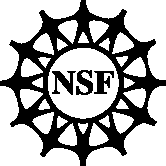Community Access at Ritter Observatory

|
With support from the NSF-PREST program,* Ritter is committed to making 25% of its usable observing time available to the astronomical community.
|
Ritter Observatory performs spectroscopic service observing on behalf of the astronomical research community. Requests for observations in support of student theses, for monitoring series on a particular star or stars, and for observations in support of other observatories, whether ground-based or spaceborne, are especially welcome. Requests are welcome at any time and can usually be accommodated within 24 hours if necessary, weather permitting.
To request spectroscopic service observations, send email to Nancy Morrison or Karen Bjorkman specifying:
- Object(s)
- Spectral resolution (normally R = 6,000 or 26,000; see the instrumentation page for options)
- Signal-to-noise ratio
- Wavelength range. The region around Hα is easiest for us to reach at present, with either spectrograph.
- Observation frequency and duration (if monitoring series)
For more information about the telescope and instrumentation, click here.
For more information about the reduced data products, click here.
Proprietary data period: one year after the end of data collection, after which the data will be placed in the public archive. Extensions can be negotiated.
Evening visits or field trips by small classes are invited. Please contact Nancy Morrison to make arrangements.
Ritter will train undergraduate and graduate students in telescope operation and in spectroscopic observing techniques and data reduction and analysis. Because our NSF funding has expired, individual training visits will no longer be conducted, unless a prior commitment has been made. Prior commitments will be honored.
- Individual training visits will last one to two weeks. Lodging will be in a nearby hotel during the academic year or in on-campus student housing during the summer. Funding to support students' lodging expense is available. Up to four students can be accommodated at the telescope at a time.
- On each usable night, students will spend all night at the telescope with a Toledo faculty member or a senior Ph.D. student, participating in normal in-house and service
observing programs. Students will:
- Improve their understanding of celestial coordinates and the sky
- Learn techniques of operation of a professional telescope
- Become familiar with observatory operations, including the normal precautions that observatories take against adverse environmental conditions
- On cloudy nights, students will learn data reduction and analysis with IRAF under the supervision of a faculty member or a senior Ph.D. student. For students who do not need to learn IRAF, other software is also available. Concepts covered will be tailored to the needs of the students, but they may include:
- Principles of operation of CCDs
- Concepts of spectroscopy such as the instrument profile and spectral resolution
- Error analysis of equivalent width and radial velocity measurements
- Characteristics of Ritter data as needed to carry out further analysis
- Introduction to the reduction of raw data
For a photo album from recent training sessions, click here.
For a printable flier describing the program, click here.
To apply for training, students are invited to provide by email or post
- A letter giving
- Objective for the training
- Desired time frame for the visit; provide second and third choices, if possible
- Description of planned research project, if the objective is to undertake research
- Description of future career plans
- Intended use of Ritter data archives, if any
- A transcript - official or unofficial - of previous college or university course work
- A supporting letter from a mentor or research advisor, mailed separately
Address for email applications: Nancy Morrison or Karen Bjorkman
Address for applications by post:
Nancy D. Morrison
Ritter Observatory, Mail Stop 113
NSF-PREST Training Program
The University of Toledo
2801 W. Bancroft Street
Toledo OH 43606-3390
An index to all of Ritter's archival data may be found here.
Ultimately, it will contain links to data in the public archive, which contains reduced spectra in FITS format, including spectra of
- Telluric standard stars, mostly rapidly-rotating A- and B-type main-sequence stars
- Artificial template spectra for telluric line removal
- Radial-velocity standard stars, mostly K-type giants
- Chromospherically active stars
- Selected hot emission-line stars
- Novae and symbiotic stars
*This material is based upon work supported by the National Science Foundation under Grant No. AST-0440784. Any opinions, findings, and conclusions or recommendations expressed in this material are those of the author(s) and do not necessarily reflect the views of the National Science Foundation.
Ritter Observatory home page
Document custodian: Nancy Morrison
Page last updated: September 12, 2009 

